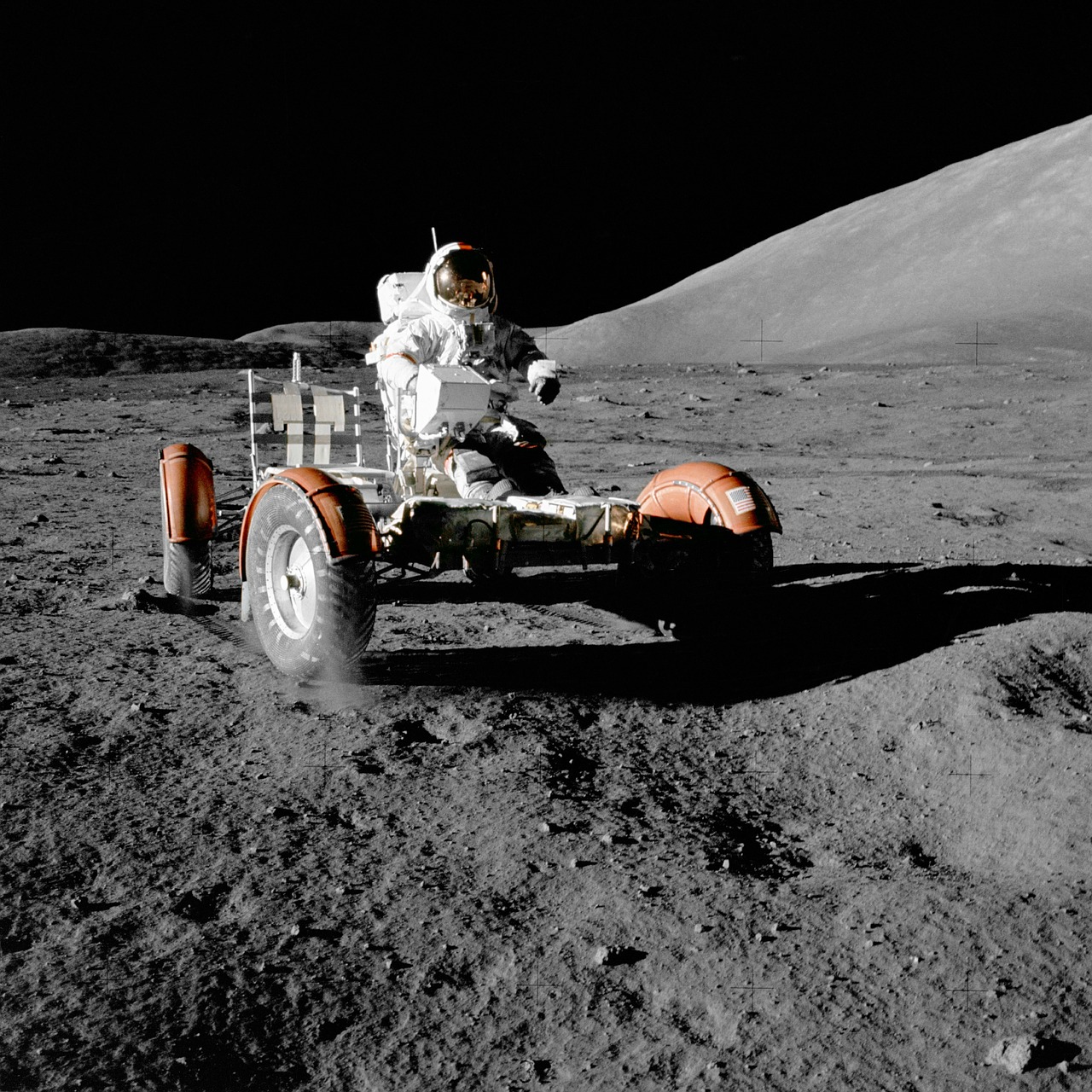
Pre-reading questions:
I will read each question. Then, please answer them.
- What do you know about a lunar rover?
- For you, what is a historic mission?
Vocabulary:
I will read the words, meanings, and sample sentences. Then, repeat after me.
- historic /hi-STAWR-ik/
- celebrate /SEL-uh-breyt/
- achievement /uh-CHEEV-muhnt/
- landing /LAN-ding/
- precise /pri-SAHYS/
[adjective] – important or likely to be important in history
They planned to build historic buildings.
[verb] – to take part in special enjoyable activities in order to show that a particular occasion is important
They always celebrate their wedding anniversary by going out to dinner.
[noun] – something very good and difficult that you have succeeded in doing
It gives you a sense of achievement if you actually finish a very long book.
[noun] – the fact of an aircraft arriving on the ground or a boat reaching land
There’s a special area at the airport where you can view aircraft taking off and landing.
[adjective] – exact and accurate
He caught me at the precise moment when I smiled.
Article reading:
Please read the whole article. Then, I will check your pronunciation and intonation.
Emirati scientists are working on another historic mission; the construction of a lunar rover, while the United Arab Emirates celebrates the achievement of its Hope probe. Last month, the UAE became the first Arab country to launch a spacecraft into orbit around Mars. It will be the tiniest rover ever to land on the moon, and it will be a regional first. The Yutu rovers from China are the lightest to date, weighing 310 pounds (140 kilograms) and landing on the moon in 2013 and 2019. On the other side, the UAE’s will be less than a tenth of that. It will be around 21 inches (54 centimeters) long and 3.3 inches (8.5 centimeters) tall with its payload, weighing about 22 pounds (10 kilograms).
The Emirates Lunar Mission will travel to a part of the moon that has never been explored by a rover in 2024. The precise landing site is still uncertain, but the aim is to learn more about the variations in lunar dust and rocks around the moon. Because they lack an atmosphere, the moon, asteroids, and the planet Mercury are all examples of airless bodies. Since they lack an atmosphere, solar rays, meteoroids, and dust constantly change and weather their surfaces. The team aims to closely study the moon’s soil, take temperature measurements, observe how lunar dust adheres to different surfaces, and assess the effects of solar radiation.
The Emirates Lunar Mission will travel to a part of the moon that has never been explored by a rover in 2024. The precise landing site is still uncertain, but the aim is to learn more about the variations in lunar dust and rocks around the moon. Because they lack an atmosphere, the moon, asteroids, and the planet Mercury are all examples of airless bodies. Since they lack an atmosphere, solar rays, meteoroids, and dust constantly change and weather their surfaces. The team aims to closely study the moon’s soil, take temperature measurements, observe how lunar dust adheres to different surfaces, and assess the effects of solar radiation.
Comprehension questions
I will read each question. Then, please answer them based on the article.
- Who are working on are working on another historic mission?
- Which became the first Arab country to launch a spacecraft into orbit around Mars?
- What is the lightest rover to date?
- What will travel to a part of the moon that has never been explored by a rover in 2024.
- Could you give examples of airless bodies as stated in the article?
Discussion questions
I will read each question. Then, please answer them.
- Why do you think this project is necessary for us?
- Why do you think the The Emirates Lunar Mission chose to explore a part of the moon that has never been visited by a rover?
- In your opinion, is it important to closely study the moon’s soil? Why or why not?
- Is space travel important? Please explain your answer.
- If you were given a chance to study the moon, what would you specically want to learn about it? Why?